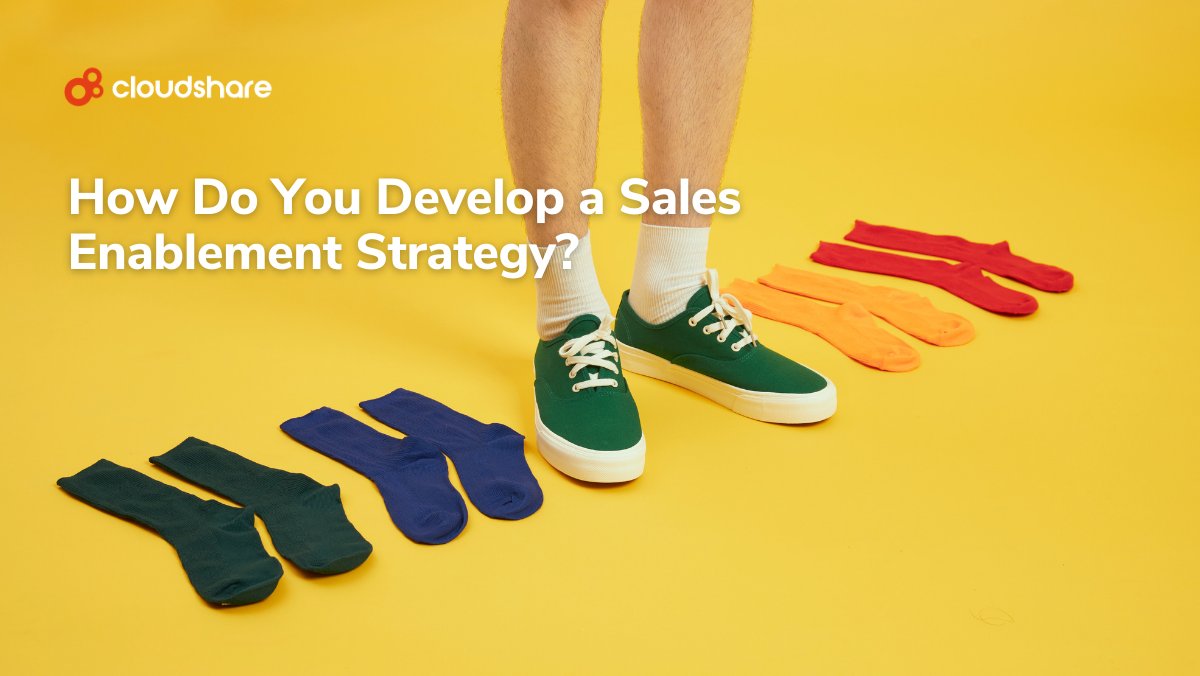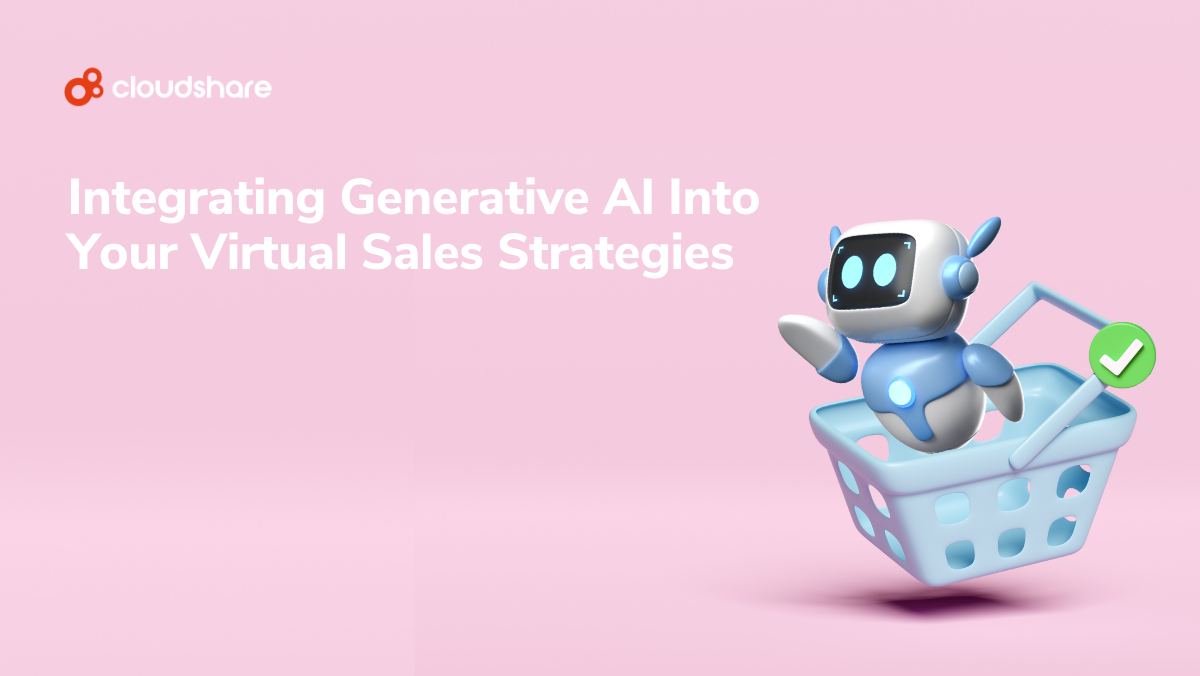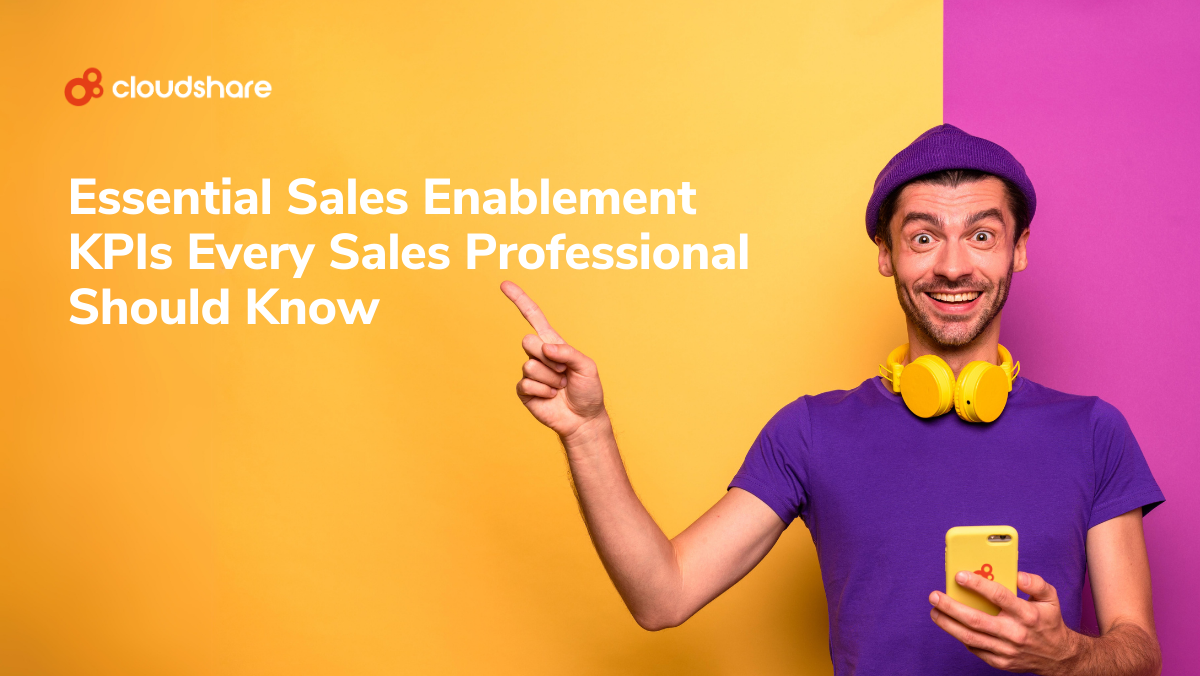
How do you define your sales enablement strategy? Where do you even begin?
These are questions we frequently hear our customers ask and with good reason. It’s been a challenging few years for sales teams. Some days, it feels like the world is dancing from one global crisis or economic catastrophe to the next.
And customers feel it too — which is why, for the past few years, we’ve seen buyers grow progressively more risk-averse.
In this landscape, sales enablement has never been more important. We’ll walk you through how your business can lay the necessary groundwork for a big-picture, strategic approach that leaves your team free to do what they do best: close deals.
What is sales enablement?
But first things first. Let’s first define “what is sales enablement?” In essence, it means providing a salesperson with the right resources (such as information), processes, and tools they need to work effectively and close a sale.
Today, many of the communication channels, tools, and resources sales teams rely on are digital – which is why so many managed to overcome the difficulties posed by the COVID-19 pandemic. However, there’s a difference between technology being a sales enabler to maintain basic business continuity, versus using technology to reach another level of sales enablement. More on that later.
Now it’s time to look at creating a sales enablement strategy.
Step One: Assess Your Current Outlook
First, look at the tools your sales team uses and how they communicate internally, with prospects and leads, and with your marketing department. Talk to your salespeople and learn about the parts of the process that work well and the parts that don’t. Ideally, you’ll want to get answers to the following questions:
- Do they have the necessary tools?
- Can they access all sales collateral and data in a single location?
- Can they communicate effectively as a team?
- Are they receiving correct, up-to-date information from marketing?
- What areas of the sales process do they feel need the most improvement and why?
- How well do your sales enablement applications and systems allow your teams to fulfill their role?
These questions will serve as the foundation of your strategy, allowing you to identify the core issues with your current process. From there, you can identify — and begin moving toward — a solution.
Step Two: Create a Charter
Once you have a firm grasp of the problem, the next step is to lay out your plan in the form of a sales enablement charter. Take the problems you identified in the previous step and assess them side-by-side with your overall business challenges, strategy, and objectives. From there, define the following:
- Your mission (e.g. train the sales team in the latest product positioning)
- The strategy (e.g. provide regular training from the marketing department)
- Participants (e.g. sales reps, sales managers, marketing executives)
- Execution (e.g. online training for new starters and refresher/update sessions)
- Timeline/roadmap (e.g. phased quarterly implementation to be fully complete by 2025)
- Metrics for success (e.g. conversion rate, new hire ramp-up time)
Bear in mind that this should be treated as an ongoing process rather than a one-off exercise to be completed and then forgotten. Training materials and collateral eventually become outdated. Technology eventually needs to be replaced. Information repositories become messy and incomplete.
Keep analyzing your metrics, systems, and processes — and never stop looking for potential problems and areas of improvement.
Step Three: Loop In All Stakeholders
Next, bring all your key sales enablement stakeholders on board, starting with your sales team. They should be first past the post when it comes to developing your overall sales enablement strategy, though your customer experience, customer success and marketing teams could also provide valuable insight.
You’ll want to build on the questions you asked in step one, focusing on the following discussion points:
- Tools that may improve the sales process.
- Challenges that are stopping them from hitting their sales targets.
- Skill gaps in your sales team.
- Successful (and unsuccessful) sales tactics.
- How competing products compare to yours.
- Data that might be useful in optimizing their approach and strategy.
Once that discussion is out of the way, you should bring in stakeholders from the rest of your organization. Focus on getting leadership involved as soon as possible here — early buy-in goes a long way toward ensuring your strategy’s success.
Step Four: Map Out Your Customer Journey
Who are your customers? Why are they interested in your software, and how do they most often hear about your business? What major touchpoints occur between first contact and final sale?
Answering these questions is a crucial step in your sales enablement strategy, as it allows you to identify potential points of failure while also determining the best time and place to reach out to leads and prospects.
Step Five: Train Your Team
Your last step before getting your sales enablement strategy off the ground is to train your sales team. You should have a general idea of the skills and knowledge your salespeople need to be successful — and the areas in which they feel their training is lacking. Use those insights to develop an internal training program.
If your software is particularly complex, you may need to devote a bit more time and effort to developing a technical sales training program. Dealing with often very complex topics, sales engineers don’t just have to sell – they also have to explain. They need an in-depth knowledge of the product or products in question so that they can most effectively get the benefits across to sales leads. To do this, they also need to know your industry, your customers’ industries, as well as your customers’ challenges and goals.
After all, a more formal training program is far more reliable than simply sharing a few datasheets and tips with your teams. Plus, providing high-quality demos may not be easy, especially for remote staff.
Step Six: Adopt the Right Sales Enablement Technology
Technology can play a valuable role in putting your sales enablement strategy into practice. The right tools can not only help you more effectively train your salespeople but also help those salespeople more effectively connect with prospects. Take CloudShare as an example.
Our virtual IT lab makes it easier than ever to create high-impact, engaging virtual training and product demos — compelling hands-on software experiences that empower your people and enhance the customer journey at every stage. Don’t just take our word for it, though. Book a demo, and let us show you what our platform can do.
This blog was published in May 2021 and updated in March 2024.


